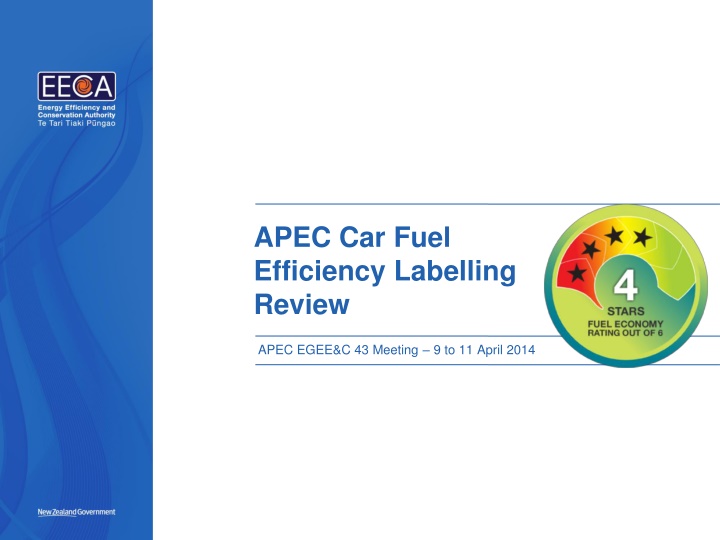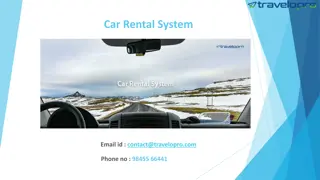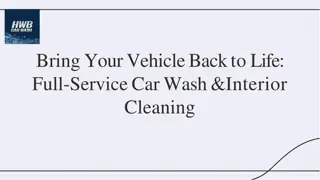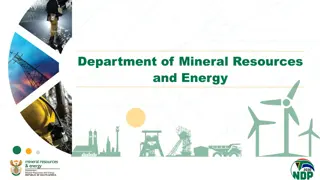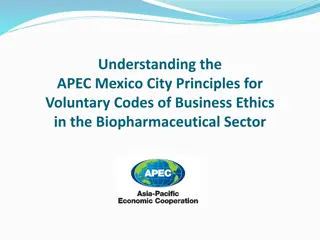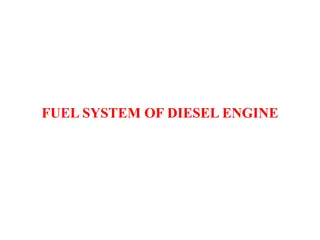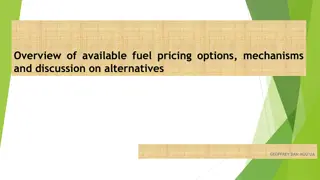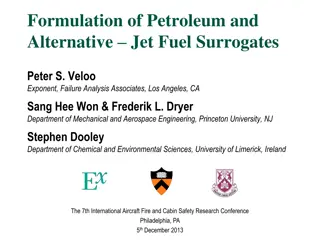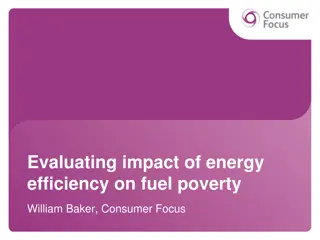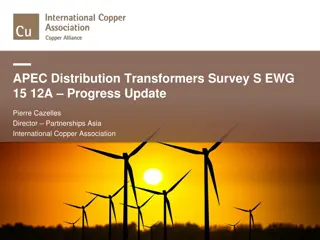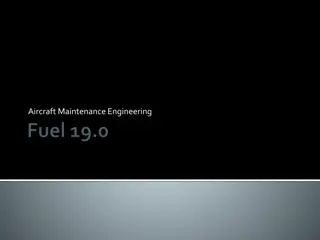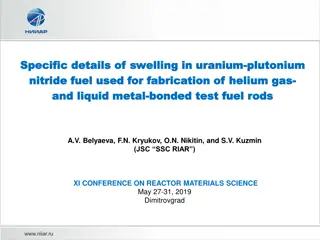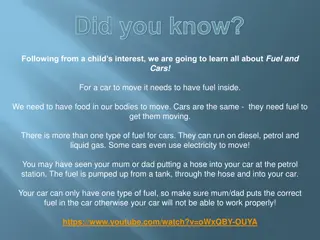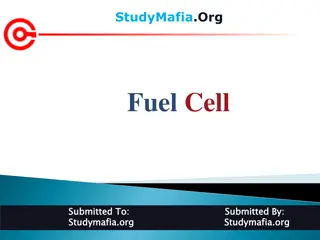APEC Car Fuel Efficiency Initiatives Overview
Large fuel efficiency gains potential across APEC economies. Focus on energy efficiency in transport, commitment to reduce energy intensity by 45% by 2035. Importance of vehicle labelling for information dissemination. Specific examples like Holden Barina and Mazda CX-5 showcase varying fuel consumption levels.
Download Presentation

Please find below an Image/Link to download the presentation.
The content on the website is provided AS IS for your information and personal use only. It may not be sold, licensed, or shared on other websites without obtaining consent from the author.If you encounter any issues during the download, it is possible that the publisher has removed the file from their server.
You are allowed to download the files provided on this website for personal or commercial use, subject to the condition that they are used lawfully. All files are the property of their respective owners.
The content on the website is provided AS IS for your information and personal use only. It may not be sold, licensed, or shared on other websites without obtaining consent from the author.
E N D
Presentation Transcript
http://www.aa.co.nz/assets/motoring/owning-a-car/_resampled/SetWidth355-fuelrating-lrg-4.png?m=1331604406?m=1331604406http://www.aa.co.nz/assets/motoring/owning-a-car/_resampled/SetWidth355-fuelrating-lrg-4.png?m=1331604406?m=1331604406 APEC Car Fuel Efficiency Labelling Review APEC EGEE&C 43 Meeting 9 to 11 April 2014
Background Transport represents around 27% of all energy consumption across APEC Significant energy and carbon saving potential Several areas of intervention: Vehicle purchase Vehicle maintenance Driver behaviour How much they drive (PT, conservation) How they drive Low rolling resistance tyres Consumer Energy (PJ) 250 Renewable Non-Renewable 200 Energy Use PJ/yr 150 100 50 0 Electricity Transport Residential Heat (wood) Industrial Heat (wood, geothermal gas, coal etc) 2
Background Continued Large fuel efficiency gains potential Most efficient in class is less than half of least efficient Large amount of choice many models under 6L/100km Small, large, medium, diesel, petrol, station wagon etc. Min-Max FC by Class SUV - Large SUV - Medium SUV - Small Car - Very large Max Car - Large Min Car - Medium Car - Small Car - Light 3 0 2 4 6 Fuel Consumption L/100km 8 10 12 14 16 18
APEC Fit 2013 APEC leaders declaration: reiterates the importance of energy efficiency in transport and the commitment to the energy intensity reduction target of 45% by 2035 2011 APEC joint energy and transport ministers declaration We instruct the EWG and the Transportation Working Group (TPT-WG) to collaborate on joint activities 2013 St Petersburg energy ministers declaration affirms that energy efficiency is one of the fastest, most environmentally sound, and cost effective ways to address climate change and energy security while stimulating economic growth 4
Vehicle Labelling Intervention to address information barriers Vehicle Fuel Efficiency Labelling used across several APEC economies However many economies are yet to implement this type of scheme 5
Holden Barina 7.3 L/100km http://www.sensethecar.com/wp-content/uploads/2011/09/Mazda-CX-5-2012-7.jpg Mazda CX-5 6.4 L/100km 6
Project Objectives Key Enable developing economies to implement fuel labelling schemes. Objective Analysis of existing labelling schemes across APEC. Recommendations to harmonize APEC-wide fuel economy testing regimes including new vehicle technologies. Assess the costs and benefits of harmonizing LV fuel economy information and policy. Project Objectives: 7
Method Identify existing schemes and develop analysis framework Identify relevant test standards and their alignment with each other Carry out assessment identifying strengths and weaknesses. Identify transferable components useful to APEC economies Generate recommendations for implementation Carry out capacity building workshop 8
